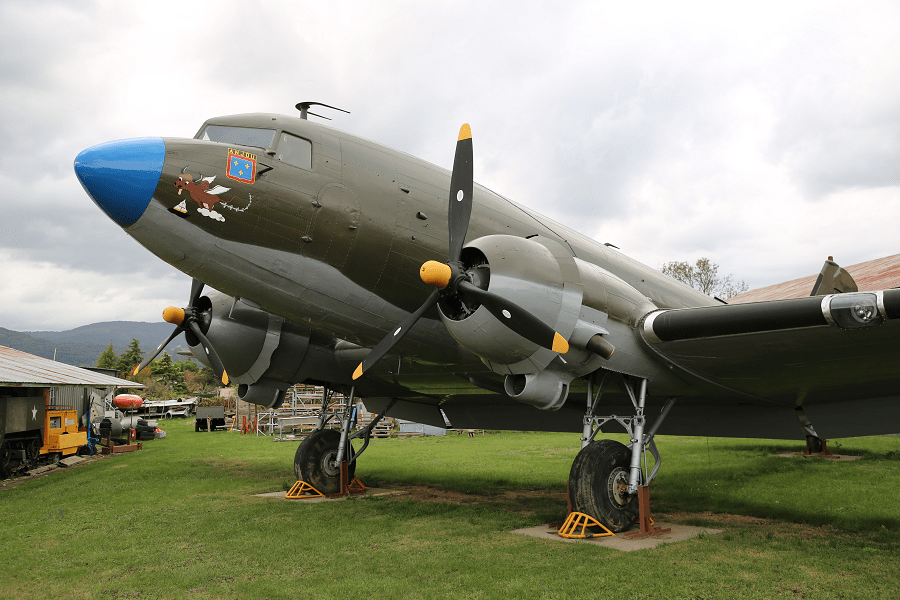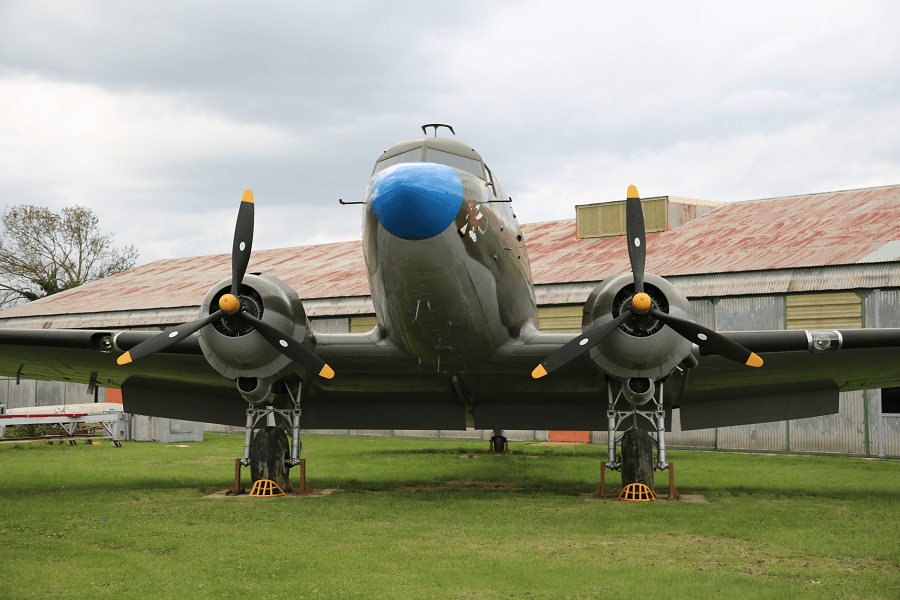The Douglas DC-3 is a propeller-driven airliner which had a lasting effect on the airline industry in the 1930s/1940s and World War II. It was developed as a larger, improved 14-bed sleeper version of the Douglas DC-2. It is a low-wing metal monoplane with conventional landing gear, powered by two radial piston engines of 1,000–1,200 hp.
Specifications (DC-3A-S1C3G)
General characteristics
Crew: two
Capacity: 21–32 passengers
Length: 64 ft 8 in (19.7 m)
Wingspan: 95 ft 2 in (29.0 m)
Height: 16 ft 11 in (5.16 m)
Wing area: 987 sq ft (91.7 m2)
Aspect ratio: 9.17
Airfoil: NACA2215 / NACA2206
Empty weight: 16,865 lb (7,650 kg)
Gross weight: 25,200 lb (11,431 kg)
Fuel capacity: 822 gal. (3736 l)
Powerplant: 2 × Pratt & Whitney R-1830-S1C3G Twin Wasp 14-cyl. air-cooled two row radial piston engine, 1,200 hp (890 kW) each
Propellers: 3-bladed Hamilton Standard 23E50 series, 11 ft 6 in (3.5 m) diameter
Performance
Maximum speed: 200 kn (230 mph, 370 km/h) at 8,500 ft (2,590 m)
Cruise speed: 180 kn (207 mph, 333 km/h)
Stall speed: 68.0 kn (78.2 mph, 125.9 km/h)
Service ceiling: 23,200 ft (7,100 m)
Rate of climb: 1,130 ft/min (5.7 m/s)
Wing loading: 25.5 lb/sq ft (125 kg/m2)
Power/mass: 0.0952 hp/lb (156.5 W/kg)













